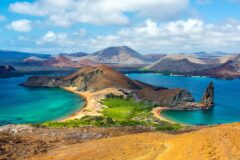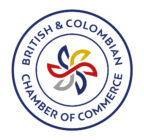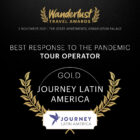Private Journeys
Treasures of Central America: Heritage of the Aztec and Mayan Empires
19 days
from £5,900pp

Overview & Highlights
A comprehensive Mayan and Aztec tour for history lovers. Mesoamerica has a huge number of archaeological sites and monuments. From Mexico City move on to colonial and indigenous Oaxaca and the Yucatán Mayan jungle pyramids. Over the border to Mayan Copán (Honduras), and Tikal (Guatemala).
- Mexico City: Full day guided city tour and excursion to Teotihuacan pyramids
- Guided visits to Puebla and the pyramid at Cholula
- Oaxaca: Guided excursion to the Zapotec and Mixtec ruins of Monte Albán and Mitla
- Mérida: Guided excursions to Chichén Itzá, Uxmal and Kabah
- Palenque: Guided tour of the archaeological site
- Tikal: Guided tour of the ruins
- Copán Ruinas: Guided tour of the Copán Mayan site
Travel from the pre-Aztec ruins of cities and temples around multi-layered Mexico City – where you will appreciate the Spanish colonial legacy in all its glory – to ancient Aztec pyramids, as well as Mayan temples and fortresses in the mountains around Oaxaca. Go on to explore the evocative ancient monuments, testimony to bygone Mayan empires, which lay hidden and silent for centuries amid the deep valleys and jungles of the Yucatán Peninsula.
Mexico is one of Latin America’s most vibrant and culturally rich destinations, with a huge diversity of historical, cultural and natural attractions. Its archaeological richness is second to none. Most of the sites, including Aztec pyramids and Mayan Aztec temples are easily accessible, but many still have a feeling of remoteness; evoking the atmosphere of bygone times.
Cross the border into the jungles of northern Guatemala to explore Tikal which was named a UNESCO World Heritage site in 1979: this vast Mayan site is one of the most impressive of its type on the continent, with iconic ruins of temples and pyramids; and on to Copán in Honduras, an ancient Mayan city, with its superlative intricate stonework.
Outline itinerary
Day 1
Arrive in Mexico City. Transfer to central hotel.
Day 2
Guided city tour and excursion to Teotihuacan pyramids.
Day 3
At leisure in Mexico City. Optional excursion to the ancient Toltec city of Tula
Day 4
By road to Puebla, excursion to the great pyramid at Cholula
Day 5
By road to Oaxaca; guided excursion to the ruins of Monte Albán.
Day 6
Visit Mitla and El Tule.
Day 7
Fly to Mérida, Yucatán.
Day 8
Guided visit to the ruined Mayan city Chichén Itzá.
Day 9
Guided excursion to Mayan ruins of Uxmal and Kabah.
Day 10
Transfer to the city of Campeche on the gulf coast
Day 11
Onwards to Palenque in Chiapas state
Day 12
Guided excursion to Palenque archaeological site.
Day 13
Through the Tabasco lowlands and Peten jungle to Tikal in Guatemala.
Day 14
Guided tour of Tikal, Mayan ruined city.
Day 15
By land over the border to Copán, Honduras.
Day 16
Guided excursion to Copán, Mayan city.
Day 17
By road to Antigua, Guatemala.
Day 18
At leisure in Antigua.
Day 19
Transfer to Guatemala City airport for international flight home.
Itinerary
Day 1
Arrive in Mexico City. Transfer to central hotel.
Mexico City was built on the site of Tenochtitlán, the capital of the Aztec empire, and it lies at 2,250m above sea level. Vast, chaotic and vibrant, this sprawling megalopolis of more than 20 million people has a multitude of attractions. You’ll be spending 3 nights here.

Day 2
Guided city tour and excursion to Teotihuacan pyramids.
Guided tour of the city centre and Teotihuacan. The arrival of the Spanish conquistadores was seismic event in the story of the Aztec people. Their magnificent causewayed city was razed, and the invading Spaniards rebuilt it in their own style; the development fuelled by silver mining. This is all reflected in the cultural vestiges apparent all over the modern-day city which you’ll see during your guided tour. Visit the zócalo, or main square, monumental Metropolitan Cathedral and National Palace with its murals by Diego Rivera.
Later, head into the countryside towards the megalithic archaeological site of Teotihuacan. Dating back over 2,000 years, it was once one of the largest cities in the world. It is hugely influential in the historical narrative of modern Mexico and, although abandoned by the time of the Aztecs, even this great empire held it in awe. Stroll along the imposing Avenue of the Dead, leading to the vast Pyramid of the Sun, and climb its vertiginous steps for a panorama of the ruins.
If you have time we suggest you visit the world-class Museum of Anthropology, exhibiting remarkable, well displayed Aztec artefacts alongside items from other ancient civilisations. There’s also a scale model of the lake-city Tenochtitlán. It’s a fantastic introduction to the superb and sometimes grisly artistic achievements of Mexico’s early inhabitants.

Day 3
At leisure in Mexico City. Optional excursion to the ancient Toltec city of Tula
You’re at leisure today, although we have a very wide choice of excursions to make the most of your time. Our Travel Experts will be happy to discuss these with you. If you’re considering this holiday, you’ll be specifically interested in Mexico’s ancient civilisations, so a day trip to Tula could well be of interest.
Tula, located 80km north of the capital was probably an ancient city of the Toltecs, at its peak between AD 900 and 1150. Its main attractions are its giant 4.5m-high stone warrior figures which cut a dramatic profile against a deep blue sky. A visit to Tula can be combined with the town of Tepotzotlán. It has a lovely main square and one of Mexico’s most ornate baroque churches – the Iglesia de San Francisco Javier, accessed via the adjacent huge monastery. The church and monastery combine to form the Museo Nacional del Virreinato – a collection of religious paintings, statues, chalices and furniture.

Day 4
By road to Puebla, excursion to the great pyramid at Cholula
It is a 2-3hr drive to Puebla, one of the cities which most evoke the country’s Spanish colonial past. Beyond the sprawling suburbs, the gorgeous historic centre is groaning with baroque churches (70 in the centre alone) and thousands of other graceful buildings embellished with the hand-painted ceramic maiólica tiles which it manufactures.
A conservative, strongly catholic and very traditional community, it took the ‘ wrong’ side in the War of Independence and has been involved in some bloody battles. Explore the city with a local guide and visit the hilltop pre-Columbian site of Cholula. This huge pyramid is larger than the Egyptian Pyramid of Cheops, but today is not much more than a grassy mound, topped by….a church! Overnight in Puebla.

Day 5
By road to Oaxaca; guided excursion to the ruins of Monte Albán.
Leave Puebla by road and travel for 5-hours southeast across the Sierra Madre mountains to the joyful city of Oaxaca. The population in this area is still dominated by Zapotec and Mixtec Indians, but the town has many examples of well-preserved Spanish colonial architecture, some fine museums and a thriving artistic community, as well as a wonderful climate. The peace and quiet of the cobbled streets is a welcome contrast to the busy capital.
Head out of town to nearby Monte Albán, the grand Zapotec ceremonial centre. Strategically located on an artificially levelled hill where three valleys meet, the site has superb views over the surrounding area. There is time to explore the pyramids, steep staircases, walls covered with strange carvings, burial chambers and temples. Although there is a theory that the main plaza was a religious ceremonial site, most of the imagery all over the place is decidedly militaristic, featuring tortured captives and devastated conquered settlements.

Day 6
Visit Mitla and El Tule.
Depart Oaxaca for the Zapotec ruins of Mitla, 46km away. The main attraction is its impressive inlaid stone mosaics that decorate its palaces. Best preserved of the ruins are its half-dozen 38m long columns in its centre.
On the return trip, stop at the huge 2-3,000-year-old ahuehuete tree, one of the oldest in the world, which dominates the parish church of Tule village. With a girth of 42m and a diameter of 14m, it also claims to be the widest tree in the Americas.
A final stop will be at a mezcal distillery to learn about the production process of this agave-based spirit, made only in Mexico and mostly in Oaxaca.

Day 7
Fly to Mérida, Yucatán.
Fly via Mexico City to Mérida in the Yucatán peninsula. The city was founded by the Maya and named Tiho. In 1542 it was conquered by the Spanish conquistadores who dismantled the Mayan pyramids and used the stones as foundations for the cathedral.
Mérida then became an immensely wealthy city, described as the ‘Paris of the New World’. Its money came mainly from the production of sisal, cactus fibres that are used to make rope, and it was culturally and geographically isolated from the rest of the country until transport infrastructure reached it in the 1950s.
Today Mérida retains a lovely colonial centre, with a mix of opulent and crumbly buildings but it is a modern, bustling, thriving city, with lots of local character, some excellent places to eat and good shops and markets. The inhabitants, descendants of the Maya and the colonists, love a good fiesta, and you may well find one going on, with live music and market stalls, while you are there.

Day 8
Guided visit to the ruined Mayan city Chichén Itzá.
From Mérida drive to Chichén Itzá (3 hrs), the best presented of all the Mayan sites, dominated by the huge, symmetrical, stepped El Castillo pyramid. The origins of the site are mysterious: it appears to have Toltec as well as Mayan influences.
The site hosts the largest and best-preserved ball court in the Americas, the venue for an ancient ritual game that was played throughout the continent, but which is still not fully understood. Archaeologists have not been able to determine whether it was the losers or winners who were decapitated, but judging from the gory carvings along the base of the court’s walls, someone certainly came to an unpleasant end. There is also a huge sacred well.

Day 9
Guided excursion to Mayan ruins of Uxmal and Kabah.
Guided excursion to the Mayan temple complex at Uxmal, 80km from Mérida. The site is dominated by the majestic Pyramid of the Magician, alongside which is an elegant ‘nunnery’ quadrangle with Puuc-style complex stonework pieced together like a jigsaw puzzle. Strolling through the ruins, cradled in dense vegetation shading the visitor from the scorching sun is an almost mystical experience.
Continue to Kabah, with its incredible Palace of Masks, with intricate mosaics representing the face of Chac the rain god 260 times.

Day 10
Transfer to the city of Campeche on the gulf coast
Less than 3 hours south-west of Merida and facing the aquamarine Gulf of Mexico, the colonial centre of Campeche is an unsung delight – ever in the shadow of much more visited Merida. It makes for a very attractive stopover for the night. The 18-19th century walled central heart of Campeche is a UNESCO World Cultural Heritage Site – deservedly so. Many of the stately buildings, residences, public offices and churches have been restored, their elegant façades washed with pastel colours reflecting the luminosity of the Caribbean. There’s also a lovely waterfront promenade, along which citizens stroll or cycle at sunset.

Day 11
Onwards to Palenque in Chiapas state
Today’s drive to Palenque takes 5-6 hours along the main highway.
Leaving Campeche and reaching the western edge of the Yucatan Peninsula, gulf coastal towns such as Champoton and Seybaplaya are popular resorts for locals escaping the heat. The approach road to the city of Campeche itself skirts the ocean, with some soothing views to prepare you for your arrival in the state capital. The last few hours to Palenque take you through the tropical lowland plains of Tabasco state, the original seat of the Olmec civilisation. Dotted with palms and farmsteads this is cattle country, although Tabasco is also a major oil producing state.
Palenque is the jumping off point to visit the splendid Mayan ruins set in emerald rainforest just east of town. Your hotel is in lush grounds a short drive from the relaxed, modern town of Palenque which has a few informal restaurants, shops and bars.

Day 12
Guided excursion to Palenque archaeological site.
Guided tour of Palenque ruins. The Mayan site of Palenque is set on a hill amongst lush green rainforest abundant with monkeys and birdlife, and a majority of the buildings remains unexcavated. The temples that have been renovated are in remarkably good condition, the most impressive being the Templo de las Inscripciones . Also impressive is Temple 13 that houses a tomb and red-coloured skeleton believed to have been a queen.

Day 13
Through the Tabasco lowlands and Peten jungle to Tikal in Guatemala.
Rise early for the drive to El Ceibo on the remote Mexico-Guatemala border, where upon completion of formalities, our Guatemalan driver will meet you for the onward leg to Tikal, in the steamy Peten region of northern Guatemala. There’s around 8 hours of driving today, long enough to get a sense of just how remote and extensive the Maya civilisation was.

Day 14
Guided tour of Tikal, Mayan ruined city.
There will be a guided tour of the archaeological site at Tikal. Steep-stepped and vertiginous temples emerge high above the rainforest canopy; the views over the site from one of these ancient skyscrapers are unforgettable. Spend the day wandering through the palace complexes.
Tikal was one of the largest and most important Mayan city states, reaching its peak around AD800 prior to its mysterious demise. The pyramids and temples seem frozen in time, but you’re brought back to the present by the roar of curious Howler monkeys and lithe Spider monkeys as they swing through the trees; and by flashes of colour as toucans and parrots take flight.

Day 15
By land over the border to Copán, Honduras.
It is a 4.5-5hr drive to the Mayan site of Quiriguá. Here, some inscriptions relating to the measurement of time can be found. The principal features of these ruins are the enormous ‘stelae’ exquisitely carved with glyphs and ‘zoomorphs’ representing a dynastic history of its rulers. Continue to Copán, a further 2hrs and just across the border in Honduras.

Day 16
Guided excursion to Copán, Mayan city.
One kilometre from town, Copán is one of the most outstanding Mayan ruins in the region. It is not as immense as the sites of Tikal or Chichen Itzá, but the Maya craftsmanship has survived the sands of time – evident on the intricate carvings of 21 stone columns, or stelae.
The 3m-high columns stand among temples, ball courts and the renowned hieroglyphic stairway with 1,250 blocks carved with glyphs – the longest inscribed text in the New World. Copán is believed to have been in its ‘golden era’ between 553AD and 738AD, before falling into decline soon after.

Day 17
By road to Antigua, Guatemala.
Drive via Guatemala City to Antigua. This once-great city was sidelined by the Spanish Empire following earthquake damage. Today, with its sunny backdrop of orchards and volcanoes, it’s a colonial masterpiece, its shady plazas, baroque churches, boutiques and chic restaurants popular with visitors. It has, however, one of the most un-touristy fruit and vegetable markets in Latin America.

Day 18
At leisure in Antigua.
The city is a work of art, with cobbled streets, overhanging tiled roofs and a beautiful, leafy central plaza. There’s an abundance of huge ruined churches, convents and monasteries, testimony to a time when Antigua was the country’s capital and its main religious centre. It seems that every doorway opens onto a fragrant tiled courtyard.
A dramatic backdrop of smouldering volcanoes and ruined churches and convents surrounded by parkland bear witness to the city’s destruction a volcanic eruption in 1773.
Antigua is a welcoming place to relax and unwind, do some shopping in tempting boutiques and art galleries, and enjoy the excellent food in a large range of restaurants and pavement cafés. Wander around the courtyards and enjoy the floral displays in beautifully tended gardens.

Day 19
Transfer to Guatemala City airport for international flight home.
Essentials
Tour info
Transport
Most of the travel on this holiday – which begins in Mexico City and travels all the way to Honduras – is overland, just one of the aspects which makes the route uniquely interesting. Although there are several long days of travelling (journey times are given in the day to day description), you’ll get to enjoy the scenery and glimpse local life in towns and villages along the way. The journey between Oaxaca and Merida is done by air.
Accommodation
This trip combines mid-range small, friendly hotels, colonial or modern in style with well-equipped rooms, private bathroom and heating/air-conditioning and superior accommodation with plenty of local colour and special features.
Meals
Breakfast daily, lunch days 8 and 9.
Guides
We carefully select our local partners, some of whom we have worked with for over 25 years. Their English-speaking guides understand the expectations of our clients very well, and are consistently singled out for praise by clients on their return.
Summary Of Nights
19 days, 18 nights: Mexico City 3; Puebla 1; Oaxaca 2; Mérida 3; Campeche 1; Palenque 2; Tikal 2; Copán Ruinas 2; Antigua 2.
Optional Excursions
There are a number of half-day, full-day or longer excursions or activities you may wish to consider in order to customise your holiday to cater for your interests. Please contact us to discuss these further or to add them to your itinerary before you depart.
Currency
The unit of currency in Mexico is the Mexican peso; in Guatemala the quetzal, in Honduras the lempira.
How To Take It
Cash machines are available in all major cities and towns in Mexico, and so taking a debit or credit card with a PIN number is the most convenient way of withdrawing money while on your trip, and in most shops and restaurants you can also pay by card. However, since cards can get lost, damaged, withheld or blocked, you should not rely exclusively on a card to access funds.
We recommend that additionally you take a reasonable quantity of US dollars cash (no more than is covered by your insurance), which you can exchange into local currency, if necessary, in Honduras and Guatemala. Dollar bills should be in good condition, soiled or torn bills may be refused. You can take sterling, but the exchange rate is not always competitive or even available, restricting the number of places where you can change money.
Daily Spend
It is very difficult to give a guideline for essential expenses but a budget of around US$50 per person per day should cover the cost of meals not included in the holiday itinerary, drinks and the odd souvenir. Eat at the best restaurants and you will pay considerably more.
Tipping
Tips are expected and local guides often rely on their tip as a significant proportion of their income.
Most service industry workers will expect a tip of some kind and so it is useful to have spare change for hotel porters, taxi drivers and the like. It is common to leave 10 – 12% in restaurants.
Tipping guidelines can be found in our Briefing Dossier.
Insurance
Travel insurance is essential. Details of our recommended policy can be found on our Travel Insurance page.
Visas
From 15 August 2024, UK passport holders require a visa for Honduras. Full UK passport holders do not need a visa for the other countries visited on this holiday (see below if travelling via the USA). Anyone with a different nationality should enquire with us or check with the relevant consulate.
If flying to the US, or via the US you will need to fill in your online ESTA application for a US Visa waiver..
Airport Taxes
If you have purchased your flights through Journey Latin America, the international departure tax is usually included in the ticket.
Trip Suitability
Generally this fast-paced and excursion-packed holiday is suitable for most visitors, including families with older children. If you have a disability, please contact us.
Climate
In Mexico City and the mountains towns the climate is temperate all year round and, because of the altitude it rarely gets too hot.
The wet/rainy season lasts through June to August, which usually means a couple of hours of rain in the afternoon. During the rainy season the mountains harbour a lush, green landscape, as opposed to the dry season’s parched, brown landscape – and it often only rains in the late afternoons and evenings. During the rest of the year there is little or no rain.
Temperatures can drop to freezing in Mexico City and Oaxaca over the winter months.
In the Yucatán peninsula, Tikal and Copán, expect a sub tropical climate. Mar-Apr are the hottest but also the driest months, while in Dec-Feb it can be chilly at the beginning and end of the day. Most rain falls between May-Oct when there are plenty of mosquitoes and other insects.
Clothing And Special Equipment
For day-to-day wear you should go prepared to encounter all seasons – a light fleece jacket and a waterproof/breathable outer shell makes a good combination. Trousers, skirt or shorts made from light, quick-drying synthetic materials work well. If you plan to eat in smart restaurants, although clothing is not formal (no need for jacket and tie), something quite smart would be appropriate.
Strong, comfortable footwear is essential and you should bring insect repellant, sun block and sun glasses. You should take swimwear for the beach.
Please get in touch with the office before departure if you have any doubts. Good equipment is very important and hard to come by in Mexico.
Vaccinations
Preventative vaccinations are recommended against the following; typhoid; polio; tetanus; hepatitis A. For specific requirements you must consult your GP.
You can also find helpful information on the Masta Travel Health website.
What's included in the price
- Services of our team of experts in our London office
- Services of Journey Latin America local representatives and guides
- All land and air transport within Latin America
- Accommodation as specified
- Meals as specified
- Excursions as specified, including entrance fees
Included Excursions
- Mexico City: Full day guided city tour and excursion to Teotihuacan pyramids
- Guided visits to Puebla and the pyramid at Cholula
- Oaxaca: Guided excursion to the Zapotec and Mixtec ruins of Monte Albán and Mitla
- Mérida: Guided excursions to Chichén Itzá, Uxmal and Kabah
- Palenque: Guided tour of the archaeological site
- Tikal: Guided tour of the ruins
- Copán Ruinas: Guided tour of the Copán Mayan site
What's not included in the price
- Tips and gratuities
- Meals other than specified
- International flights to Latin America
- Airport taxes, when not included in the ticket
- Optional excursions


































